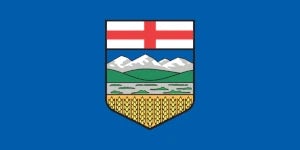Basic Personal Amount in Alberta
The portion of your income for which you don’t have to pay income tax is called the basic personal amount. The federal basic personal amount for 2024 is $15,705. The basic personal amount in Alberta for 2024 is $21,855, increasing from $21,003 in 2023. You won't have to pay any taxes if your income is lower than the basic personal amount.
In Alberta, you may also claim another $21,855 personal amount if you support a spouse, common-law partner, or eligible dependent. You cannot claim this amount if they have an income over $21,855.
Alberta Personal Amounts 2024
| Basic Personal Amount | $21,855 |
|---|---|
| Spouse or Common-Law Partner | $21,855 |
| Eligible Dependant | $21,855 |
The History of Alberta Provincial Income Taxes
Alberta’s notable income tax history began with Premier Ralph Klein (Progressive Conservative) in 1999. Klein introduced a flat tax, meaning anyone above a certain income threshold paid a fixed 10% provincial income tax. The following Premier, Ed Stelmach (Progressive Conservative), also removed health care premiums in 2009.
Rachel Notley (New Democratic Party) became Premier in 2015 and shook up Alberta income taxes. She introduced a progressive tax system whereby those earning a higher income pay a higher tax percentage. This introduction ended the flat tax system introduced by Ralph Klein 16 years prior. Today, Danielle Smith (United Conservative Party) reigns as Premier and has stood by Notleys’ progressive tax system. Alberta continues to be an excellent province for real estate investors and has one of the most straightforward eviction processes in Canada.
Alberta Child and Family Benefit
The Alberta Family Employment Tax Credit (AFETC) and the Alberta Child Benefit (ACB) were replaced by the Alberta Child and Family Benefit (ACFB) starting July 1, 2020. The ACFB is a tax-free benefit and is paid to families with children under 18.
Alberta Child and Family Benefit July 2023 - June 2024
| Base Component | Working Component | |
|---|---|---|
| 1 Child | $1,410 | $722 |
| 2 Children | $2,115 | $1,379 |
| 3 Children | $2,820 | $1,772 |
| 4 Children | $3,525 | $1,902 |
Source: Government of Alberta
You will receive the full base component amount if your family income is less than $25,935. You will receive a reduced amount if your family income is more than $25,935. The ACFB base component is available to lower-income families with or without employment income.
In order to receive the working component benefit, your family must have an employment income of more than $2,760. The amount of the working component increases at a rate of 15% for every additional dollar earned over $2,760 up until the maximum benefit amount. The working component benefit is reduced once your family income exceeds $43,460.
While all families are eligible for the base component whether they have employment income or not, only families with employment income qualify for the working component. This encourages families to stay in the workforce, as they can then claim the benefit's base and working components.
The ACFB is paid in August, November, February, and May. ACFB is a Canada Child Benefit (CCB) related program and is administered by the Canada Revenue Agency on behalf of the provincial government.
Canada Pension Plan and Employment Insurance
The Canada Pension Plan (CPP) is a monthly taxable income you receive in retirement. The amount you get in retirement is determined by your average salary, contributions to the plan, and the age you begin receiving payments. To be eligible for CPP, you must be at least 60 years old and have made valid pension contributions.
Alberta employees must contribute to the Canada Pension Plan (CPP) and Employment Insurance (EI). Your employer will match CPP contributions, while EI payments will typically be matched at a rate of 1.4x. Self-employed individuals must pay the total CPP contribution themselves, including the employee and the employer share. Additionally, those who are self-employed can optionally not contribute to EI.

